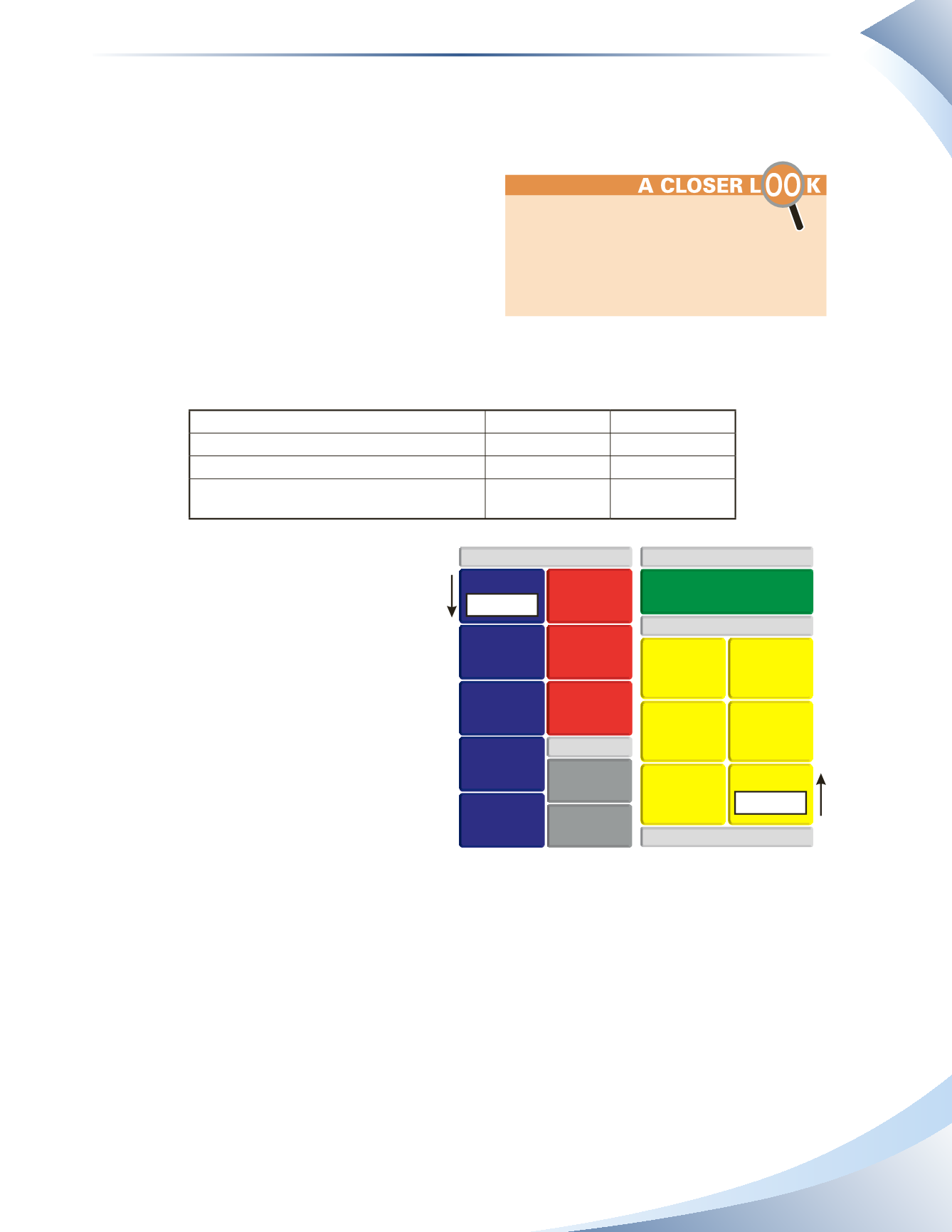
Chapter 4
The Accounting Cycle: Journals and Ledgers
83
For example, suppose you pay a $100 utility bill with cash. To analyze this, first determine which
accounts will be affected. In this example, the accounts would be utilities expense and cash. Now,
for each account, answer the following questions
•
What category does the account belong to?
•
Is the account increasing or decreasing?
•
Is the increase or decrease a debit or credit?
The full analysis for the transaction is shown in the
table below. It is important to note that the analysis
is just to determine whether the account will be
debited or credited. At this point, which account is analyzed first is irrelevant. Later, in step two of
the accounting cycle, we will record the accounts in a standardized format.
Which accounts will be affected?
Utilities Expense
Cash
What category does the account belong to?
Expense
Asset
Is the account increasing or decreasing?
Increasing
Decreasing
Is the increase or decrease a debit or credit?
(Use the Debit and Credit Reference Guide)
Debit
Credit
From this analysis, we can illustrate how
the accounts would be affected. Notice in
Figure 4.4 that utilities expense increases
with a debit and cash decreases with a
credit.
This type of analysis can be done for any
transaction. Keep this in mind as you prog-
ress and come across new accounts and new
types of transactions. To help you analyze
how increases and decreases translate into
debits and credits, consider these common
transactions
1.
Provided consulting services for a customer for cash.
2.
Received a bill for advertising, which will be paid later.
3.
Received cash from a customer for work to be completed next month.
4.
Paid cash toward the principal of a bank loan.
5.
Prepaid cash for four months’ rent.
6.
Purchased office furniture with cash.
7.
Provided consulting services to a customer on account.
8.
Paid cash toward the advertising bill received in transaction 2.
9.
A customer paid an amount they owed.
If a transaction involves cash, you may
find it easiest to analyze cash first for the
increase or decrease. Then you can turn
your attention to why cash was received or
cash was paid out.
BALANCE SHEET
CASH
ACCOUNTS
RECEIVABLE
PREPAID
EXPENSES
PROPERTY, PLANT
& EQUIPMENT
OFFICE
SUPPLIES
INCOME STATEMENT
NET INCOME (LOSS)
EXPENSES
SERVICE REVENUE
ADVERTISING
INTEREST
INSURANCE
RENT
SALARIES
UTILITIES
ACCOUNTS
PAYABLE
UNEARNED
REVENUE
BANK LOANS
OWNER’S EQUITY
OWNER’S
CAPITAL
OWNER’S
DRAWINGS
- $100 CR
+ $100 DR
________________
figure 4.4


